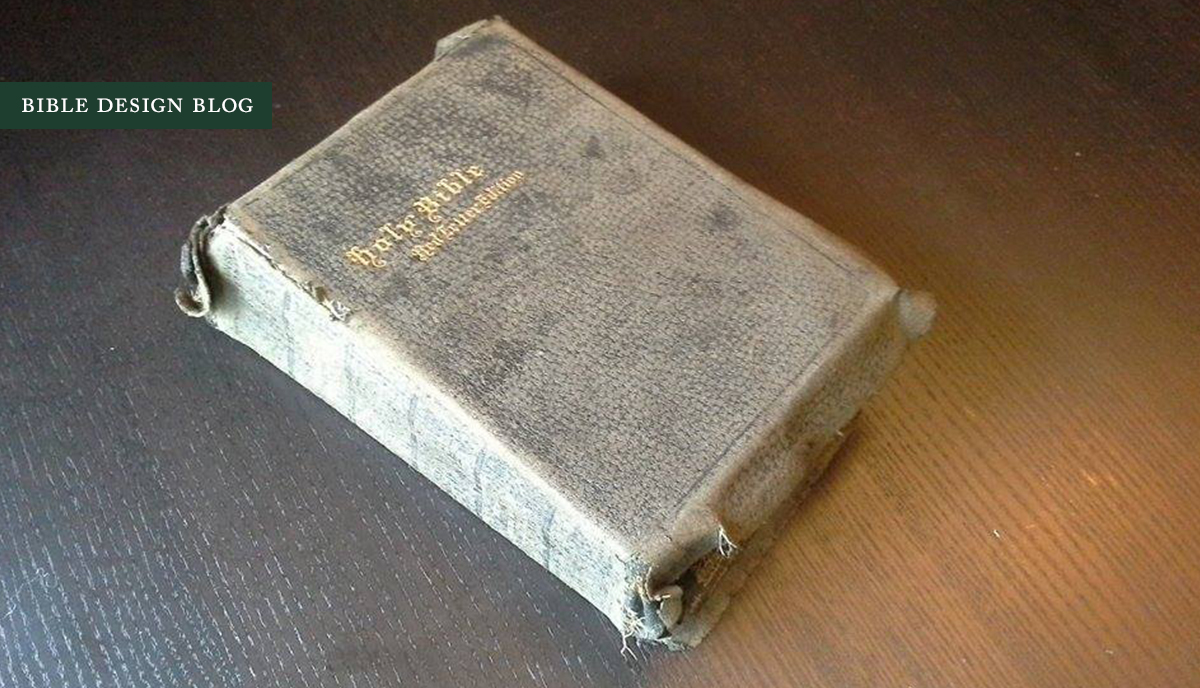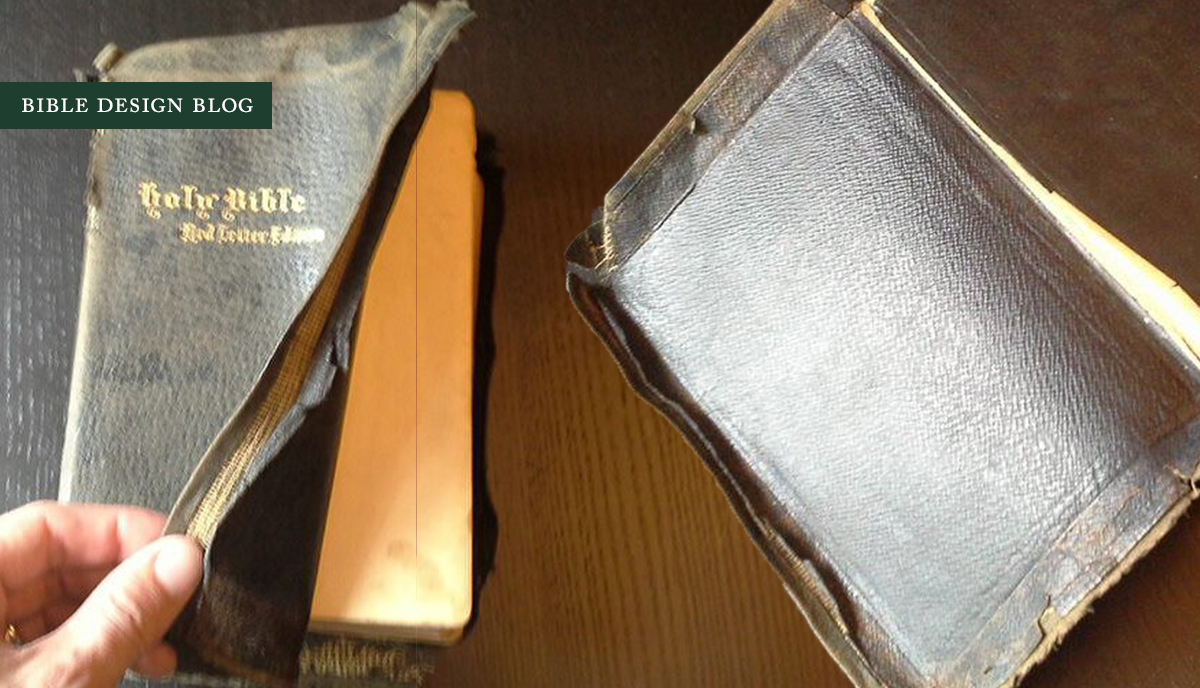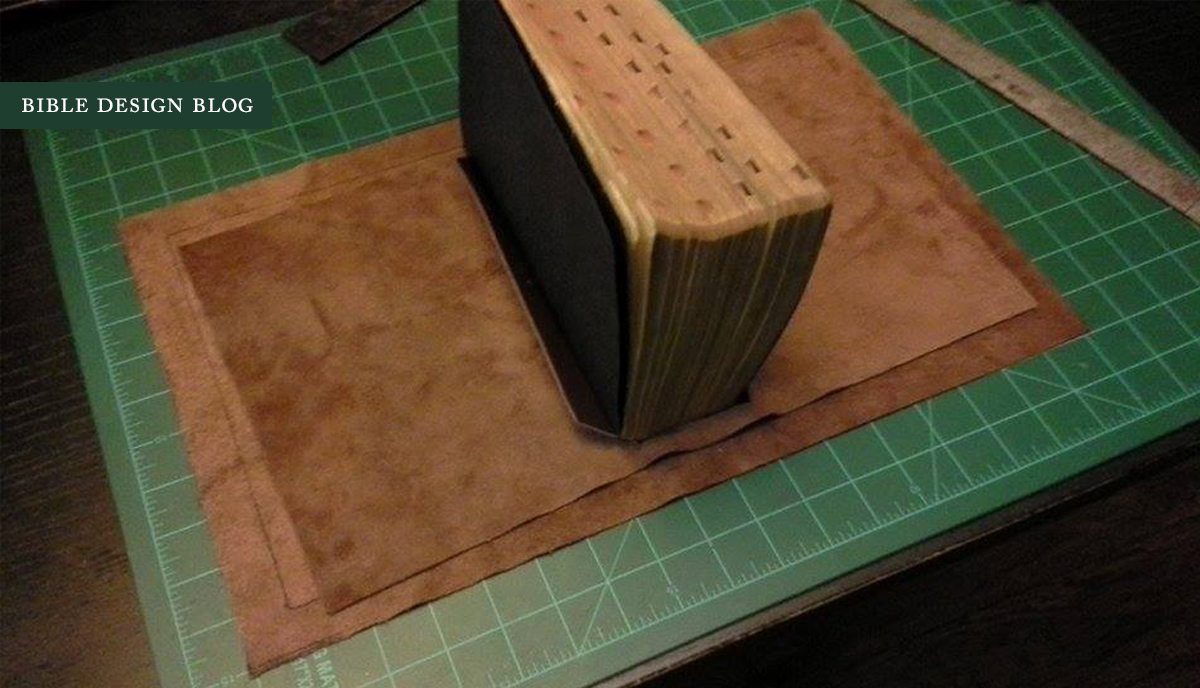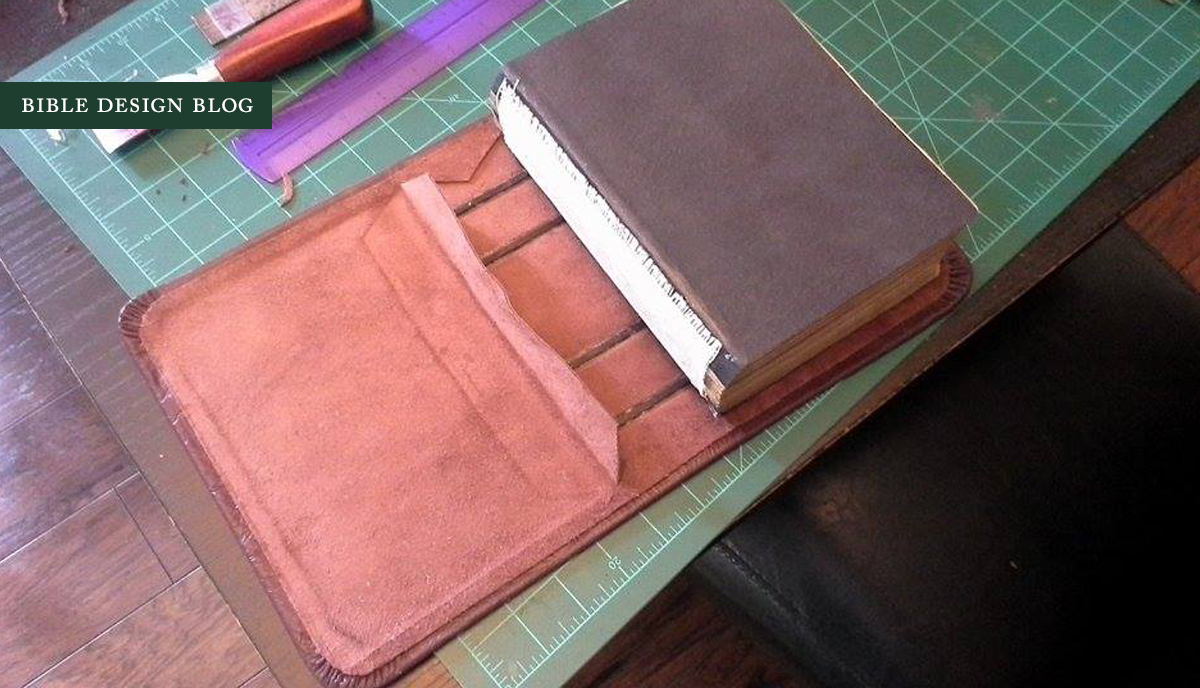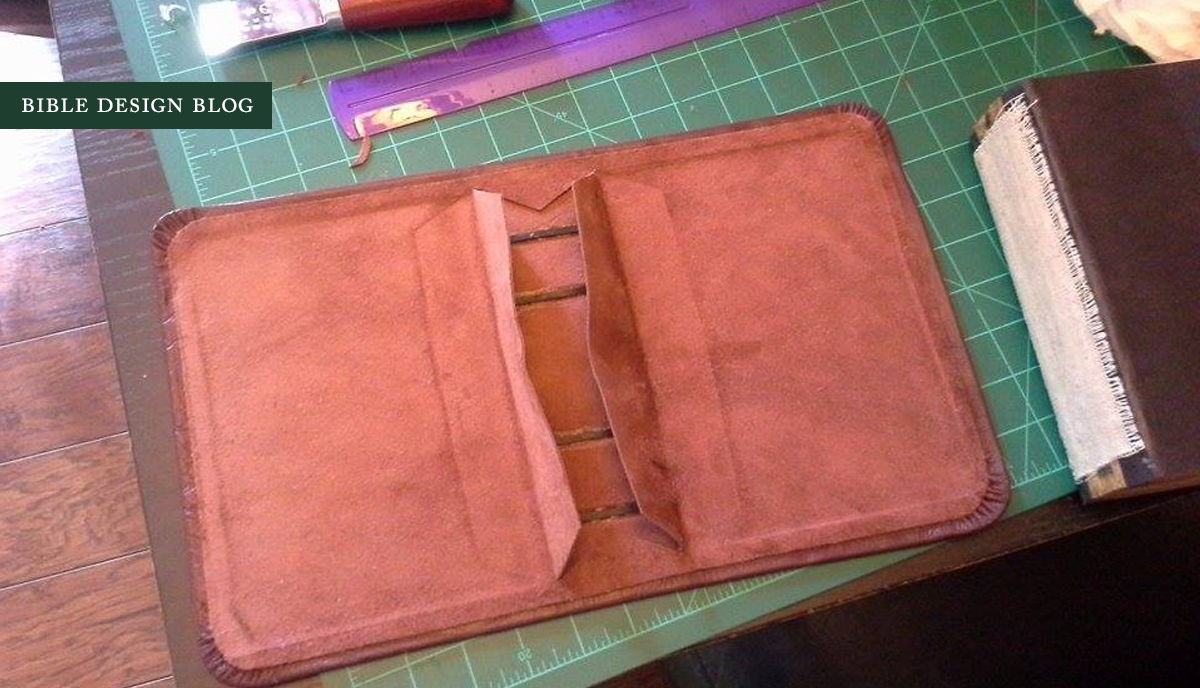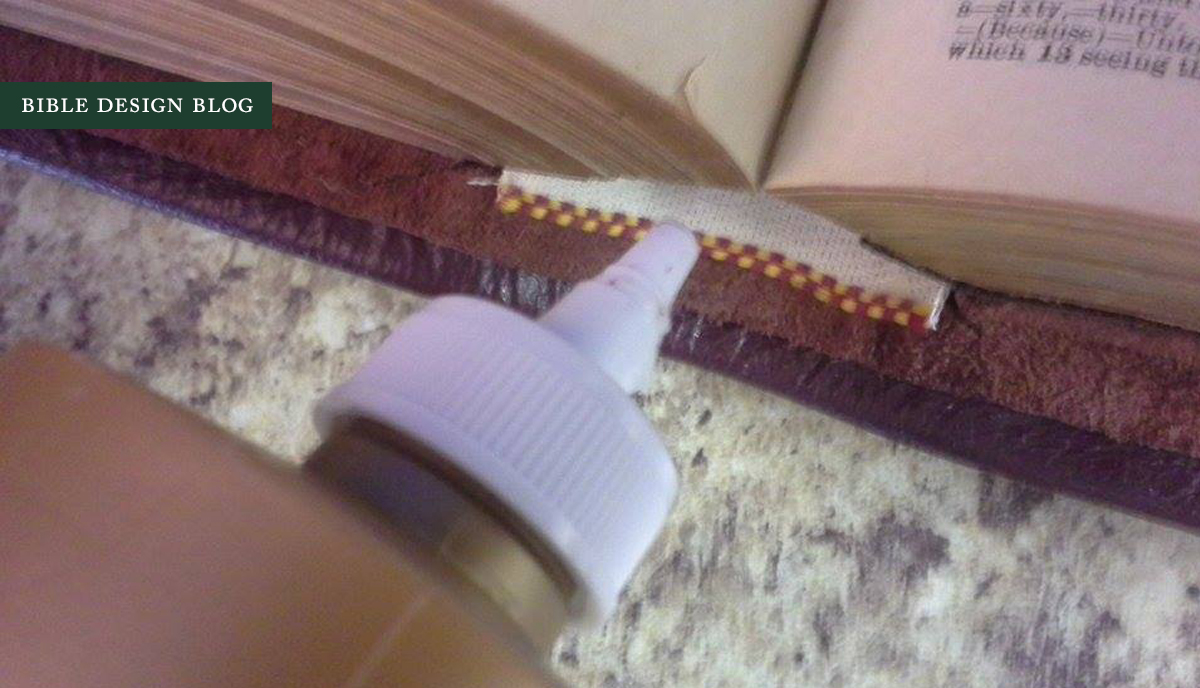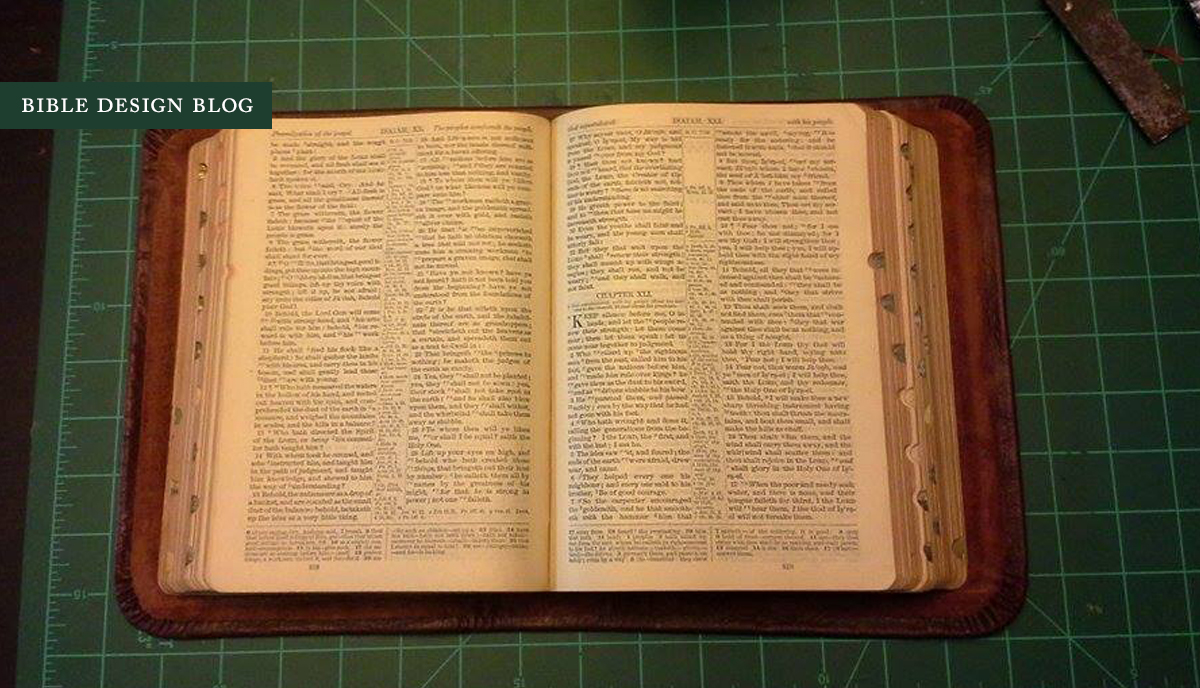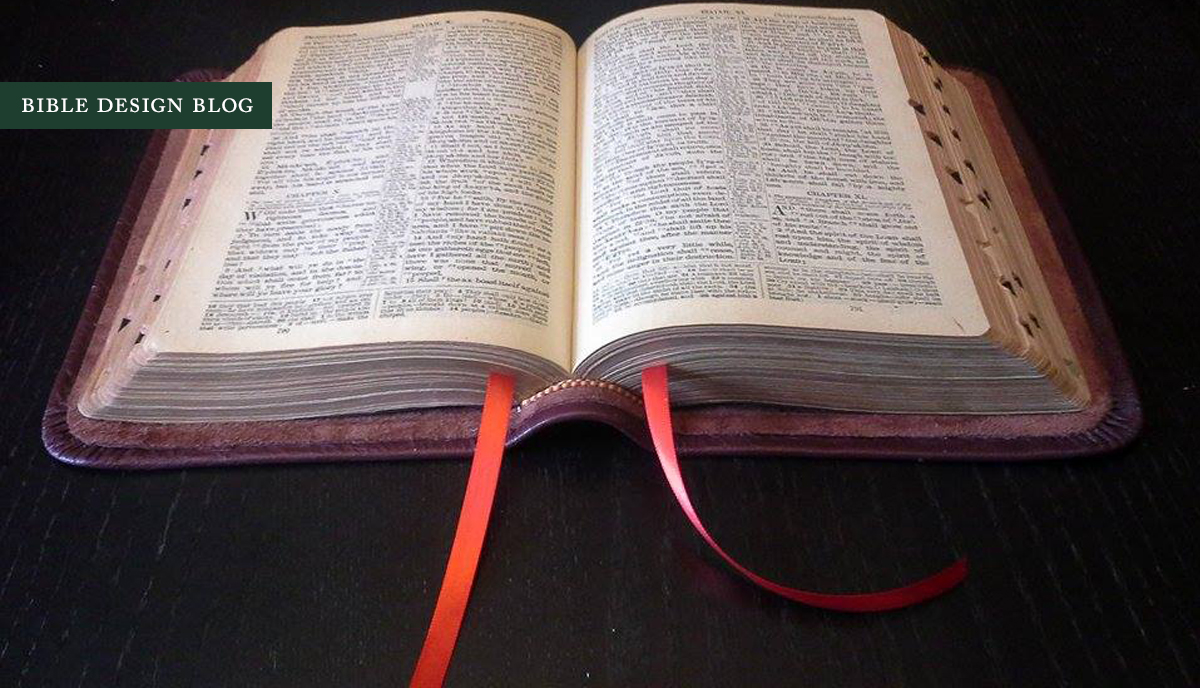The Complete Idiot's Guide to Bible Rebinding: A Guest Post by Matthew Everhard
A topic of perennial interest at Bible Design Blog has been bookbinding. My own efforts to learn the craft have led to relatively dismal results, though they've taught me a great deal about how books are made, and how difficult it can be to make them well. Recently Matthew Everhard took up the challenge, and after seeing some of his early results I reached out to see if he would share his story with us. Fair warning: if you linger over the pictures and follow the links, you may find yourself skinning the neighbor's couch and trying your hand at a little recreational binding! -- JMB
THE COMPLETE IDIOT'S GUIDE TO BIBLE REBINDING
by Matthew Everhard
There is no book called The Complete Idiot’s Guide to Bible Rebinding, but if such a volume is ever to be written, I have a feeling that I may inadvertently be its protagonist.
Let me tell you my story.
I got into Bible collecting as a hobby a couple of years ago, due largely to this very blog. Searching for a new ESV, I came across Mark’s reviews of the (then) new Legacy Heirloom edition by Crossway. I fell in love with the photography as well as Mark’s writing, and began breaking the Tenth Commandment regularly—a sin that I have repented of many times.
Mark’s site, of course, led me to other great editions by Cambridge, Schuyler and the like, including my Wide Margin ESV, which has now become my mainstay. With great paper, goatskin leather, a flexible binding and a gorgeous overall appearance, my Cambridge Bible became the love of my life. (Next to my wife, I should state clearly).
AN IDEA IS BORN As many of you collectors already know, this is an expensive hobby. Very expensive. As a local church pastor, my income steam is sufficient, but not extravagant. That led me to the idea of Bible rebinding. If you could buy a Bible (cheap) and then cloak it with a goatskin cover, what is there to lose?
Rebinding, of course, can be an excellent way to turn any regular Bible into a super-Bible. My friend Matt Bassford wrote an article about how to get one done in calfskin for as little as $75. But even then, if you start picking up the fancy options, a good rebind can easily set you back triple digits.
So then I had an idea. As Dr. Suess once said, “a terrible … awful idea.” I’ll begin rebinding Bibles myself! After all, how hard could it be?
The tools are simple enough, sure: a razor blade, some Aileen’s tacky glue, a carpenter’s square, a cutting mat to preserve the kitchen table, and a $12 leather skiving knife that I bought from Asia. This dangerous implement is complete with really cool characters that I believe are loosely translated: “Warning: white guy with a sharp blade!”
LEATHER FOR PRACTICE What about the leather, you ask? Quality leather is the sine qua non of a good rebind. Thankfully, there are a number of great places to order high quality leather, such as eBay or Springfield Leather. The key here is to get a good calfskin or goatskin leather, somewhere in the neighborhood of 1-2 ounces in thickness. Anything more than that will be too thick to fold well, and you will have to use that skiving knife a lot more than you want to. A good uncut, pre-dyed goatskin will run you about $30 - $40, so try not to mess up a lot. (On that ominous note, see more below.)
I am cheap. If I didn’t mention that before, now would be a good time to bring that up. I wanted yards and yards of free leather to use for practice so I could afford to make the predictable beginner’s mistakes. And I found that leather—in my neighbor’s trash one night.
When my block-buddy recently threw away his huge, two-piece soft leather couch, I knew I’d struck gold. My wife Kelly and I brought the couch home—with my friend’s permission, of course—and skinned that thing like a domestic beast bred just for its supple hide.
As a result, I now own dozens and dozens of square feet of rich, red-brown leather that has been worn to a soft comfortable state.
BOOK BLOCKS FOR PRACTICE With a total investment still under $50, I was ready to begin with one more stop: the church lost and found. There, we have several dozen Bibles that have been missing their owners for many months. I checked through the pile and found a few old beaters that didn’t have any identifying marks, annoying name stamps on the cover, or personal items inside. In fact, I chose some of the ones that really did need repair, so that in the happenstance that the owner reappeared, they would thank me for the work.
HELP FROM A MASTER The smartest move that I made was contacting a true master before beginning. Although there are many professionals that do Bible rebinding (Leonard’s Books, AA Leather and others come to mind), I contacted a young artisan from California who does beautiful work—right out of the shed near his home. I’ve written about Diego Caloca here, and you really should check out his stunning work. Diego kindly send me the 40-step pictorial procedure that he uses, and I was glad to follow his lead without reinventing the wheel. He’s made himself available to give me tips and pointers when necessary, and I appreciate the help greatly.
THE WORK BEGINS One rainy Florida evening, my wife and I set out together to become Bible rebinders. We made our first cuts, and laid our first glue line. Let me tell you that it is much harder than it looks. If there is one rule of Bible rebinding that you should be aware of before you begin, it is this:
There are more ways to make mistakes than there are to succeed.
Believe me, we have made every error one can possibly make. (I think.) We have cut too much off and we have left too much on. We have cut too jagged and too straight. We have made our yapps too short, and we have even made one that looks like some kind of alien creature. We have gotten glue on the gilded page edges, and not enough glue on the liners. If there is a way to ruin a Bible, I’ve done it. I’d show you the pictures, but I’m afraid you’d unfriend me on Facebook.
Logically, I suppose, if we keep learning and making those rookie mistakes, we will eventually improve enough to the point where we can be content with our work. As husband and wife, we have spent several good, quality evenings together rebinding Bibles, which is always better than watching reruns of The Carbanaro Effect.
Will we ever be professional Bible rebinders like Leonard’s or master artisans like Diego? Probably not. But we do hope to improve just enough to show off a few good looking Bibles at our church’s craft show this fall.
And one day, perhaps I can even author The Complete Idiot’s Guide to Bible Rebinding.
* * *
Matthew Everhard is the Senior Pastor of Faith Evangelical Presbyterian Church in Brooksville Florida. He is the author of Hold Fast the Faith: A Devotional Commentary on the Westminster Confession of 1647 and a few other shorter books. You can read more by Matthew at AChristianManifesto.com.

